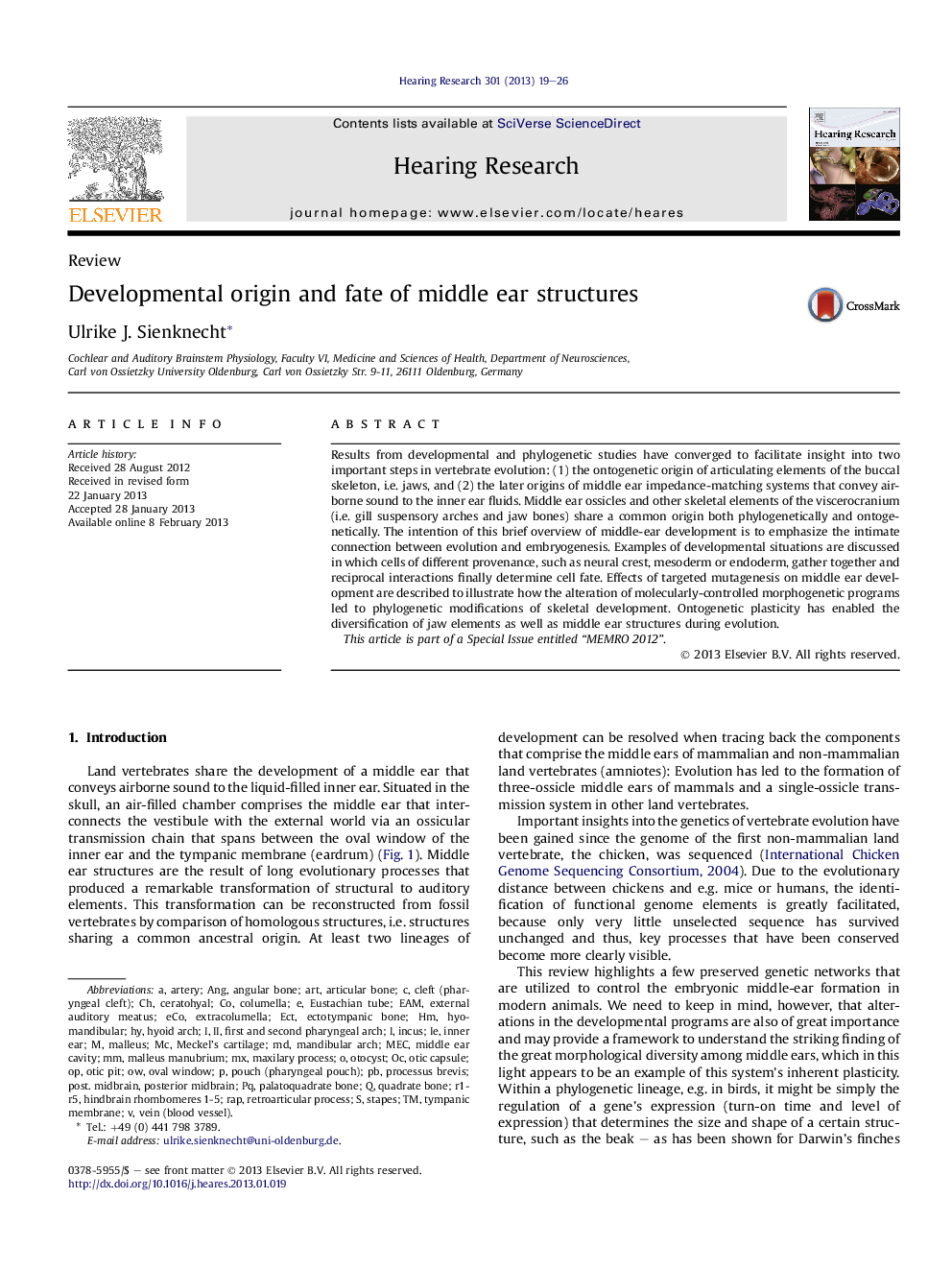| کد مقاله | کد نشریه | سال انتشار | مقاله انگلیسی | نسخه تمام متن |
|---|---|---|---|---|
| 4355200 | 1615599 | 2013 | 8 صفحه PDF | دانلود رایگان |

Results from developmental and phylogenetic studies have converged to facilitate insight into two important steps in vertebrate evolution: (1) the ontogenetic origin of articulating elements of the buccal skeleton, i.e. jaws, and (2) the later origins of middle ear impedance-matching systems that convey air-borne sound to the inner ear fluids. Middle ear ossicles and other skeletal elements of the viscerocranium (i.e. gill suspensory arches and jaw bones) share a common origin both phylogenetically and ontogenetically. The intention of this brief overview of middle-ear development is to emphasize the intimate connection between evolution and embryogenesis. Examples of developmental situations are discussed in which cells of different provenance, such as neural crest, mesoderm or endoderm, gather together and reciprocal interactions finally determine cell fate. Effects of targeted mutagenesis on middle ear development are described to illustrate how the alteration of molecularly-controlled morphogenetic programs led to phylogenetic modifications of skeletal development. Ontogenetic plasticity has enabled the diversification of jaw elements as well as middle ear structures during evolution.This article is part of a Special Issue entitled “MEMRO 2012”.
► Despite the independent parallel evolution of middle ears vertebrates use the same developmental pathways for embryonic formation of middle-ear structures.
► Middle ear development is controlled by conserved molecular mechanisms.
► Ontogenetic plasticity enables the diversification of middle ear structures during evolution.
Journal: Hearing Research - Volume 301, July 2013, Pages 19–26